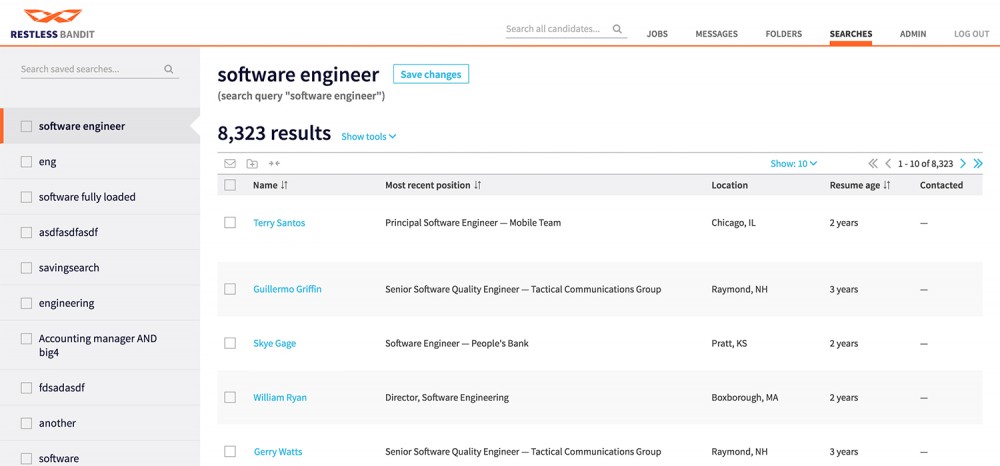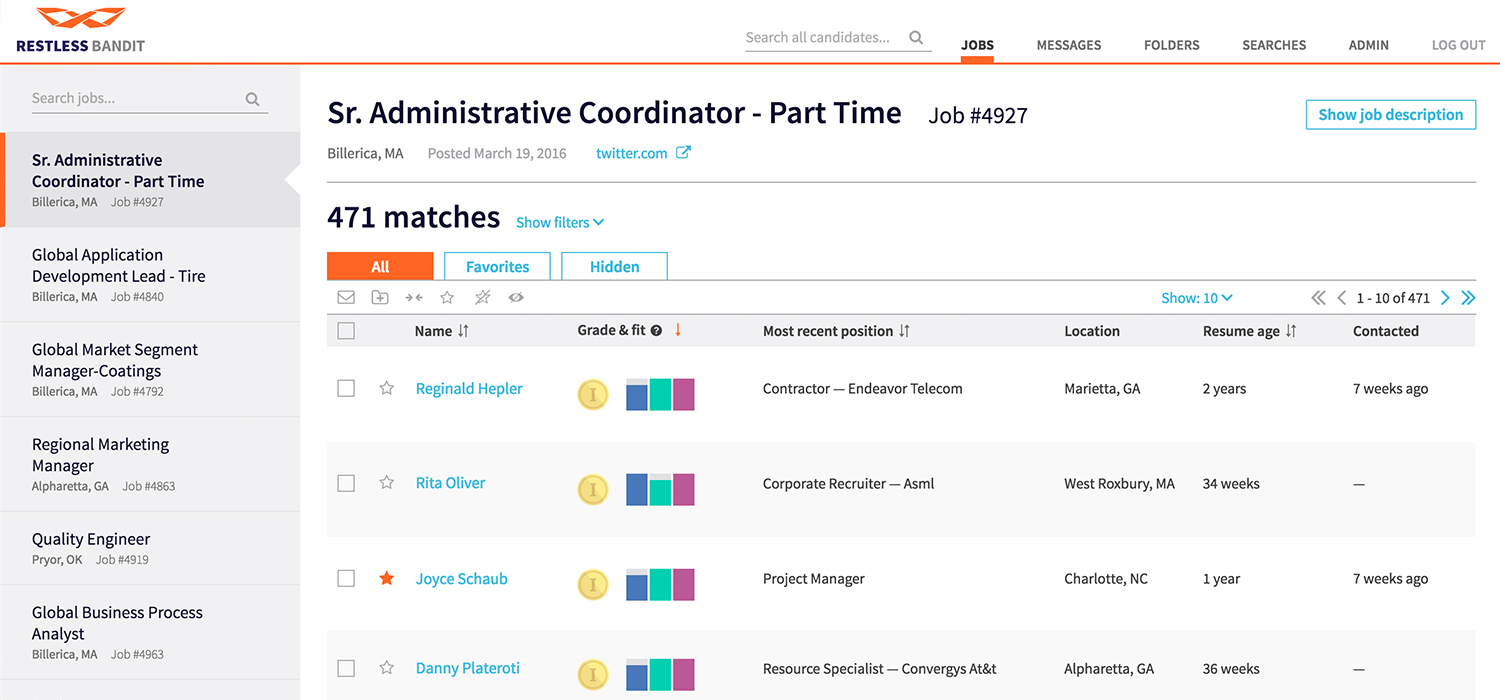Beyond Active and Passive Candidates: Learning the Art of ‘Talent Rediscovery’

Back in 2014, LinkedIn bought Steve Goodman’s data science company Bright. It was easy to see why LinkedIn made the purchase: By aggregating and analyzing roughly 40 million resumes and 100 million job descriptions, Bright was able to make predictions about which candidates were worth interviewing and which were better left with a polite rejection email. Who wouldn’t like to speed up the hiring process and spend more time with worthwhile candidates?
So Goodman and some of Bright’s other employees joined the LinkedIn family. While they were there, Goodman says, they started to receive inquiries from customers interested in targeting an often overlooked talent segment: existing resume databases.
“After the acquisition, a lot of our customers started to say, ‘That is great technology for sitting in front of the ATS, but we’re sitting on a massive pile of resumes,'” Goodman explains.
For most of these customers, the only way to pick through the hundreds of thousands – if not millions – of resumes they had on hand was to use Boolean search strings. Because of how “notoriously unreliable” that method is, Goodman says, these customers were hoping for something better – something like Bright, but for existing candidates instead of new applicants.
This is where Goodman got the idea for his new company, Restless Bandit.
“What [Restless Bandit] does is mine your internal resumes database of past applicants – your silver medalists, the people who applied for the wrong jobs, the people who applied too early or too late – and it looks at the open job rec,” Goodman explains. “It systematically surfaces the best people who are minimally qualified, and then it reaches out to those people and says, ‘You’re minimally qualified; why don’t you apply?'”
According to Goodman, the goal of Restless Bandit is to deliver higher quality talent for less money in less time through the process of “talent rediscovery.”

Screenshot of Restless Bandit
Active Candidates Vs. Passive Candidates Vs. Rediscovered Candidates
Much has been said – by this website and others like it – about passive and active candidates, the differences between the two, and the various strategies for engaging with them. Goodman’s aim with Restless Bandit is to help recruiters and employers tap into a third group of candidates: rediscovered talent. Goodman explains:
“The way we’re thinking about the market is that you have active candidates – people who apply through the usual job boards – and that’s one bucket. And you have vendors and tools that you use for that category of applicant.
“Then you have a second bucket that is the passive candidates, and we get at them through LinkedIn. There are other tools out there, but LinkedIn is obviously the 800-pound gorilla.
“Now there’s a third category emerging, which is talent rediscovery. It’s almost like having a LinkedIn Recruiter seat for your internal database. We think that the this third category is the most effective, because these people already have a relationship with your company. They’ve applied for a job before, which means they want to work for you.”
Goodman argues that rediscovered talent is cheaper, faster, and higher quality than other forms of talent for a number of reasons. First, there is the aforementioned fact that these candidates already know about your company and have expressed their desire to work for it. This means that the resumes you pull from this pool are more likely to align with your organization’s mission, vision, and needs. Second, with a technology like Restless Bandit that surfaces resumes for you, you won’t have to spend as much time sifting through applicants. Third, pulling talent from a pre-existing pool cuts the cost of job advertising. You don’t have to push your posting out to a bunch of job boards if the right candidate is already in your system.
“Talent rediscovery, we think, will be an essential tool for recruiters generally over the next five years or so,” Goodman says. “We’re one of the first ones to do it, and we’re hoping it takes hold as a category.”

Screenshot of Restless Bandit
Bonus Points: Overcoming Unconscious Bias Through Technology
There’s one more thing worth pointing out about Restless Bandit before we go. According to Goodman, the technology may also be a useful tool in helping to downplay the effect of unconscious bias in the hiring process.
“We all bring a certain bias to the table,” Goodman says. “Whatever that bias is, we bring it to the table. But our algorithm doesn’t look at names, addresses, telephone numbers, or zip codes.”
Because Restless Bandit skips this information – which can indirectly give clues about a candidate’s gender, ethnicity, religion, or other demographic characteristics – the technology is able to surface qualified candidates regardless of personal details. That means there’s one less point in the hiring process at which a recruiter’s unconscious bias could unfortunately intervene.
“The other thing is that the algorithms are consistent,” Goodman says. “Most recruiters have good days and bad days, good hours and bad hours. They’re not very consistent — no human is really consistent. But algorithms, generally speaking, are always consistent.”
That being said, Goodman readily recognizes that algorithms aren’t perfect. He is careful during our conversation to point out that they have their flaws. But he is also optimistic about the role technology can play in helping recruiters and employers combat their unconscious biases and mine their existing talent pools for high-quality hires.
That’s a hope that most of us in the industry can get behind.

